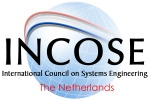
Principal Application Engineer ,
Mathworks

Tadele Shiferaw
Senior Application Engineer,
Mathworks
Workshop: MBSE and sustainable cooling systems: a case study in engineering a greener future
14:30 – 16:00
Abstract
In the early phase of a project, stakeholders, requirements engineers and system architects collaborate to derive system requirements from stakeholder needs. This is a collaborative process which requires a lot of communication. In this presentation I will explain how models help improve communication and thus increase the quality and utility of system requirements.
You can consider authoring requirements models at 3 levels of precision:
Descriptive requirements models are a step forward compared to the traditional natural language requirements as they provide a structured, graphical representation of the requirement which improves the collaboration between the teams involved. A good example of such representation would be a sequence diagram.
However, descriptive requirements models are still firmly in the engineering domain, whereas Simulatable requirements models can yield observations and insights in the system domain allowing stakeholders to get a direct understanding of the requirement in their domain. A good example of an executable formalism is a state chart.
Although these are simulation techniques that provide good coverage of system behaviours, typically simulation is targeted at key scenarios to support collaborative work. Formal requirements models on the other hand contain formalisms that enable a more systematic assessment of the model’s quality. One such formalism is a requirements table that can be used to formally prove the consistency and completeness of a set of requirements.
Formal requirements models provide a good starting point for downstream teams both because the quality of the requirements is higher, and because elements of the requirements model can be re-used during design and verification.
During this hands-on workshop we will apply these techniques to improve a cooling system to become more sustainable.
What will you learn? Hands-on experience in:
- Describing requirements using descriptive, simulation and formal models.
- Simulating requirements models to validate stakeholder needs.
- Re-using requirements models in downstream verification processes.
- How to improve the environment by designing sustainable cooling systems.
Bio Stephan van Beek
Stephan van Beek has worked as a technical specialist in Systems Engineering and Embedded Systems at MathWorks in Eindhoven for 15+ years. He works closely with customers across Europe building bridges between Model-Based Systems Engineering (MBSE) and Model-Based Design (MBD). Previously, he worked in the electronic design methodology group at Océ-Netherlands where he supported and executed projects for improving design flows. He also worked in the motion control systems group at Anorad Europe BV. Stephan has a B.Sc. degree in electrical engineering from the Polytechnic in Eindhoven.
Bio Tadele Shiferaw
Tadele Shiferaw is a senior application engineer at MathWorks Benelux focusing on physical modeling, control design, systems engineering and hardware-in-the loop testing. In this customer-facing role, Tadele leads technical engagements with both commercial and academic organizations for successful adoption of model-based design. Prior to MathWorks, he worked as a Mechatronic Software Engineer at Philips Healthcare developing high level application and low-level control software for a robotic X-ray platform. Tadele completed a graduate study in control systems and a Ph.D. on safe robotic manipulation at University of Twente in the Netherlands.



